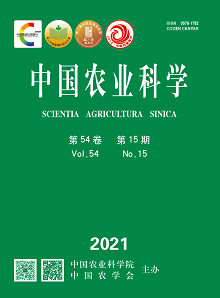【Objective】 The aim of this study was to investigate the influence mechanism of nitrogen on the fluorescence characteristics of spring wheat under high temperature, and to clarify the internal mechanism of nitrogen regulation of light reaction center, so as to formulate the nitrogen fertilizer operation measures to alleviate the harm of high temperature.【Method】 The experiment was carried out in 2019 and 2020, using the split-plot trial design. The main zones were 5 nitrogen application, including 0 (N0), 75 kg·hm-2(N1), 150 kg·hm-2(N2), 225 kg·hm-2 (N3), and 300 kg·hm-2(N4), and the sub-zones were temperatures of 25℃±2℃ (CK) and 35℃±2℃(HT). The interrelationships between nitrogen application and leaf nitrogen content, chlorophyll, PSⅡreaction center activity parameters, PSⅡJ phase variable fluorescence (VJ), PSⅡenergy allocation rate, PI, Fv/F0, and Fv/Fm at high post-flower temperatures were analyzed. 【Result】 The results showed that the effects of nitrogen application and temperature on leaf nitrogen, chlorophyll a, chlorophyll b, ABS/RC, DI0/RC, VJ, φE0 and φD0 and yield were significant. With the increase of nitrogen application, the yield increased first and then decreased, and reached at the highest yield under N3 with normal and high temperature treatments, which was 9.03 t·hm-2(CK) and 8.37 t·hm-2(HT). The difference between high temperature and normal temperature was obvious under different temperature treatment with the same nitrogen application, and the chlorophyll a, ABS/RC, ET0/RC, TR0/RC, PI, Fv/F0, Fv/Fm and yield decreased after high temperature treatment, which indicated that the effects of high temperature on fluorescence parameters and PSⅡactivity had negative effect. Under the treatments of different nitrogen application at the same temperature, the chlorophyll content and ABS/RC, ET0/RC, PI, Fv/F0, Fv/Fm of spring wheat increased first and then decreased, while the DI0/RC and VJ decreased first and then increased, and reached the peak at N3(225 kg·hm-2), indicating that the effects of nitrogen application on chlorophyll fluorescence parameters and PSⅡactivity had compensatory effect, and the appropriate nitrogen application amount could effectively enhance its activity. The effects of temperature on ABS/RC, TR0/RC, ET0/RC, Fv/F0 and Fv/Fm was not significant, but the interaction between nitrogen application and temperature reached significant level (P<0.05) and extremely significant level (P<0.01). 【Conclusion】 To sum up, the effects of nitrogen application and temperature on the fluorescence characteristics and yield of spring wheat was interactive, in which the dominant factor was temperature, while the amount of nitrogen application had a compensatory effect on it. A reasonable amount of nitrogen application could effectively increase the nitrogen content, chlorophyll content and PSⅡreaction center activity of wheat flag leaves, increase the capture, absorption, transformation and maximum photochemical efficiency of light energy by plants, and reduce the energy dissipation rate, so as to resist the damage caused by high temperature stress to the photosynthetic system of spring wheat. According to this test condition, the nitrogen application amount of N3 could effectively resist high temperature stress and increase the yield of spring wheat. The yield of high spring wheat could provide theoretical basis and technical support for high and stable yield of local spring wheat.









